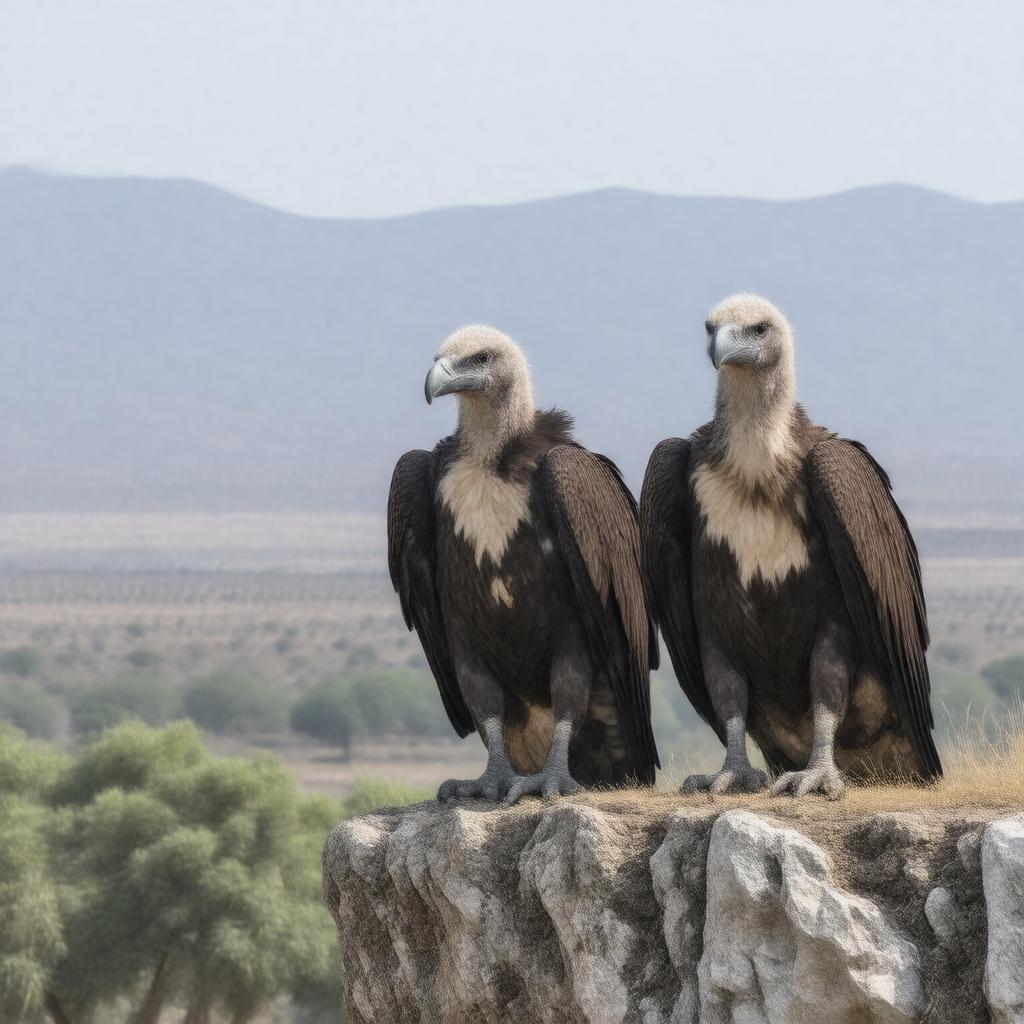Prompt
"Generate an image of a group of Old World vultures, specifically a Cinereous vulture and an Egyptian vulture, perched on a cliff edge, with a broad wingspan and hooked beaks, showcasing their distinctive bald heads, in a realistic and naturalistic style, set against a backdrop of a vast, arid landscape with scattered trees and a distant mountain range, conveying their role as scavengers and their habitat."

